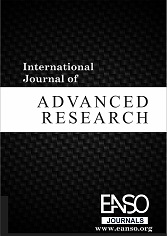Gender and Digital Payments: Men and Women’s Experience to VUP Safety Nets in Rwanda. Case Study of Nyamagabe District
Abstract
The research explores the topic of gender and digital payments, focusing on men and women experience to VUP safety nets in Nyamagabe District. The study aims to understand how gender influences the utilisation of these services, including the distinct benefits and challenges encountered by men and women, and how these experiences shape intra-familial gender relations. The study employed a qualitative approach, utilising semi-structured interviews and focus group discussions with 36 VUP beneficiaries representing direct support, public works, and nutrition-sensitive direct support components, and 8 key informants from sector, district, and central levels. Thematic analysis was used to identify patterns and insights related to men's and women's experiences in digital payments. The findings reveal that while digital payments offer convenience, security, and financial inclusion, their adoption and utilisation are influenced by gender dynamics. Women often face barriers such as limited phone ownership, lower digital literacy, and societal norms that restrict their financial autonomy. The study also highlights the transformative potential of digital payments in enhancing economic stability and empowering beneficiaries, particularly women, to engage in financial decision-making. The research concludes that addressing gender disparities and technical challenges is crucial for ensuring equitable access and utilisation of digital payment systems. It recommends comprehensive digital literacy training, user-friendly interfaces, ongoing support, community engagement, agent network expansion, gender sensitive financial literacy training, infrastructure investment, domestic violence support, data-driven policies, gender mainstreaming, and public-private partnerships. The study contributes to the understanding of gender dynamics in digital financial inclusion initiatives and provides valuable insights for policymakers and development practitioners to promote equitable and inclusive digital financial services
Downloads
References
Ahuja, R. (2001). Research methods. Rawat Publications.
Alliance for Financial Inclusion. (2019, September). Enhancing financial inclusion in Rwanda: The role of social protection programs (AFI Member Series). Alliance for Financial Inclusion.https://www.afi- global.org/wp- content/uploads/2024/10/AFI_MS_Rwanda_AW_digital.pdf
Creswell, J. W. (2013). Qualitative inquiry and research design: Choosing among five approaches. Sage Publications.
Dey, I. (1993). Qualitative data analysis: A user-friendly guide for social scientists [Taylor & Francis e-Library edition]. Routledge. Retrieved from https://www.fsnnetwork.org/sites/default/files/qualitative_data_analysis.pdf
Dzogbenuku, R. K., Amoakob, G.K., Kumic, D.K., & Kumic, G. (2021). Digital Payments and Financial Wellbeing of the Rural Poor: The Moderating Role of Age and Gender. Journal of International Consumer Marketing. DOI: 10.1080/08961530.2021.1917468
Hafkin, Nancy & TAGGART, NANCY & Miller, Bruce. (2001). Gender, Information Technology, and Developing Countries: An Analytic Study.
ITU. (2023). The gender digital divide. Facts and figures. Accessed from https://www.itu.int/itu-d/reports/statistics/2023/10/10/ff23-the-gender-digital-divide/ on 23rd, July 2024.
Kiss, A., & Abdellatif, N. (2020). The Gender Digital Divide. Accessed from https://fermun.org/wp- content/uploads/2019/11/YA_1_ENGLISH.pdf on 15th, March 2024
Kuroda, R., Lopez, M., Sasaki, J., & Settecase, M. (2019). The digital gender gap. Policy brief. Accessed from https://www.gsma.com/solutions-and-impact/connectivity-for-good/mobile-for- development/wp- content/uploads/2019/02/Digital-Equity-Policy-Brief-W20-Japan.pdf on 07th, July 2024.
Lavers, T. (2016). Understanding elite commitment to social protection: Rwanda’s Vision 2020 Umurenge Programme. Effective States and Inclusive Development Research Centre, University of Manchester.https://gender.cgiar.org/publications/understanding-elite-commitment-social-protection-rwandas-vision-2020-umurenge
Local Administrative Entities Development Agency. (2022). Annual report 2021/2022. Local Administrative Entities Development Agency (LODA). https://www.loda.gov.rw/
Mumporeze, M., & Prieler, N. (2017). Gender digital divide in Rwanda: A qualitative analysis of socioeconomic factors. Accessed from https://doi.org/10.1016/j.tele.2017.05.014 on 03rd, December 2023
Patton, M. Q. (2002). Qualitative research and evaluation methods (3rd ed.). Sage Publications.
Van Dijk, J. A. G. M. (2013). A theory of the digital divide. In M. Ragnedda & G. W. Muschert (Eds.), The digital divide: The internet and social inequality in international perspective (pp. 29–51). Routledge. https://doi.org/10.4324/9780203067061
VandenBos, G. R. (Ed.). (2007). APA dictionary of psychology. American Psychological Association. https://doi.org/10.1037/11482-000
World Bank (2021). “Jobs Interrupdated: The Effects of COVID-19 In the LAC Labor Markets”.
World Bank. (2018). The state of social safety nets. Washington, DC: World Bank.
World Bank. (2022). Assessment of the G2P Pilot (digitalization of VUP payments) and recommendations for scale up | Draft Report
World Bank. (2022). Rwanda - Social Protection Transformation Project (SPTP) (P177492)
Copyright (c) 2025 Jean de Dieu Habakwizera, Jolly Rubagiza, PhD

This work is licensed under a Creative Commons Attribution 4.0 International License.




























